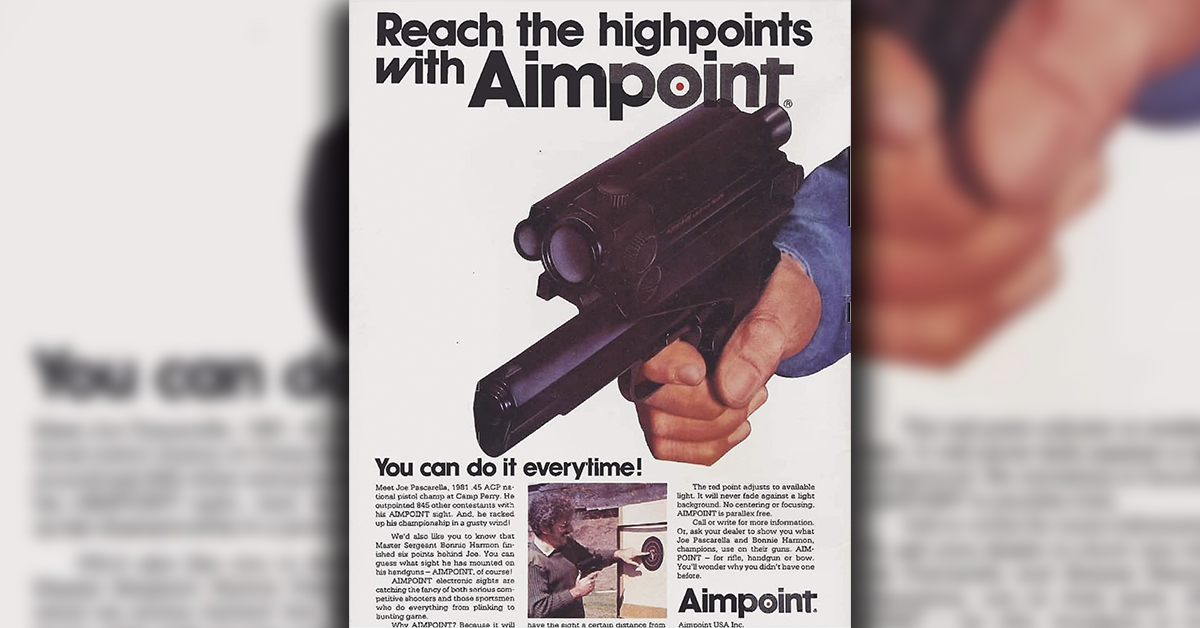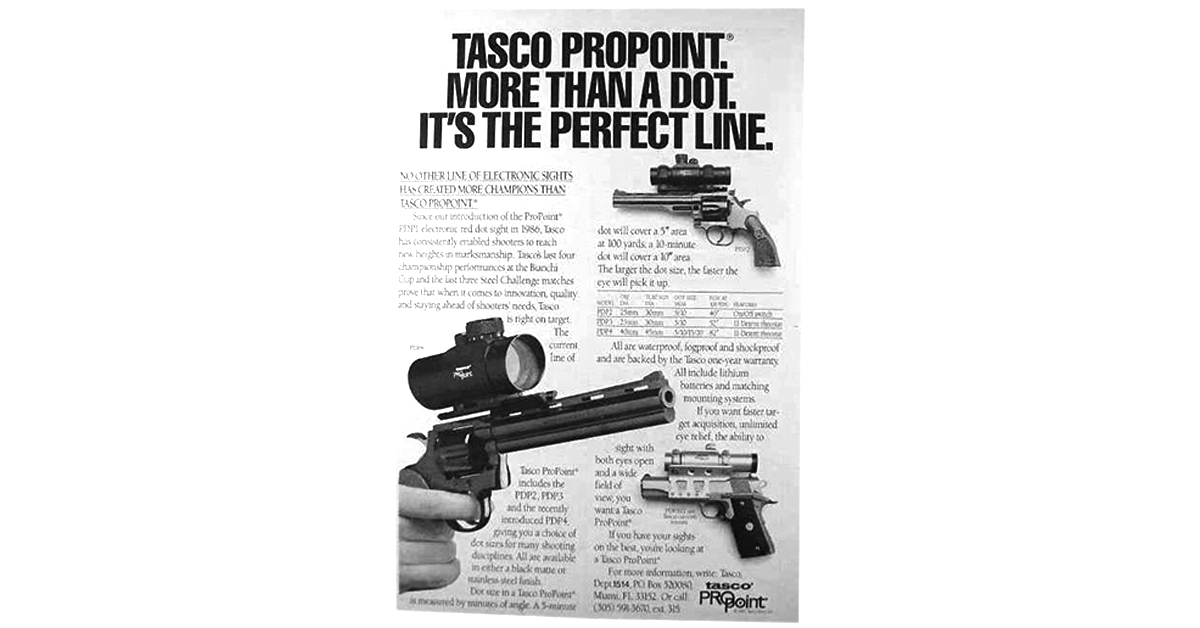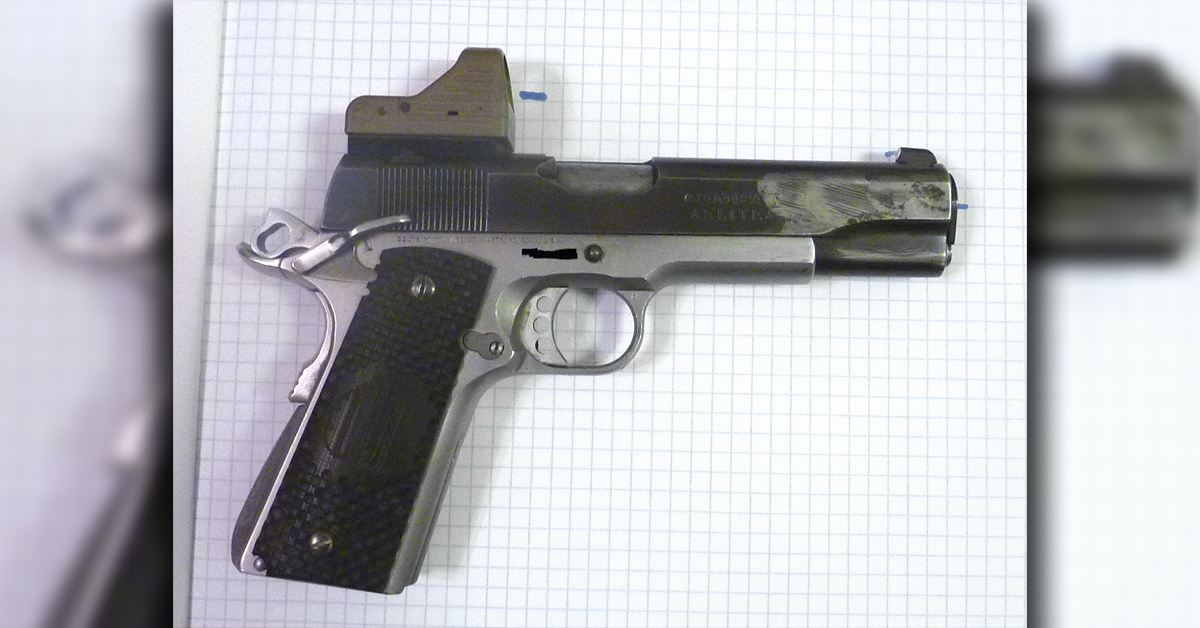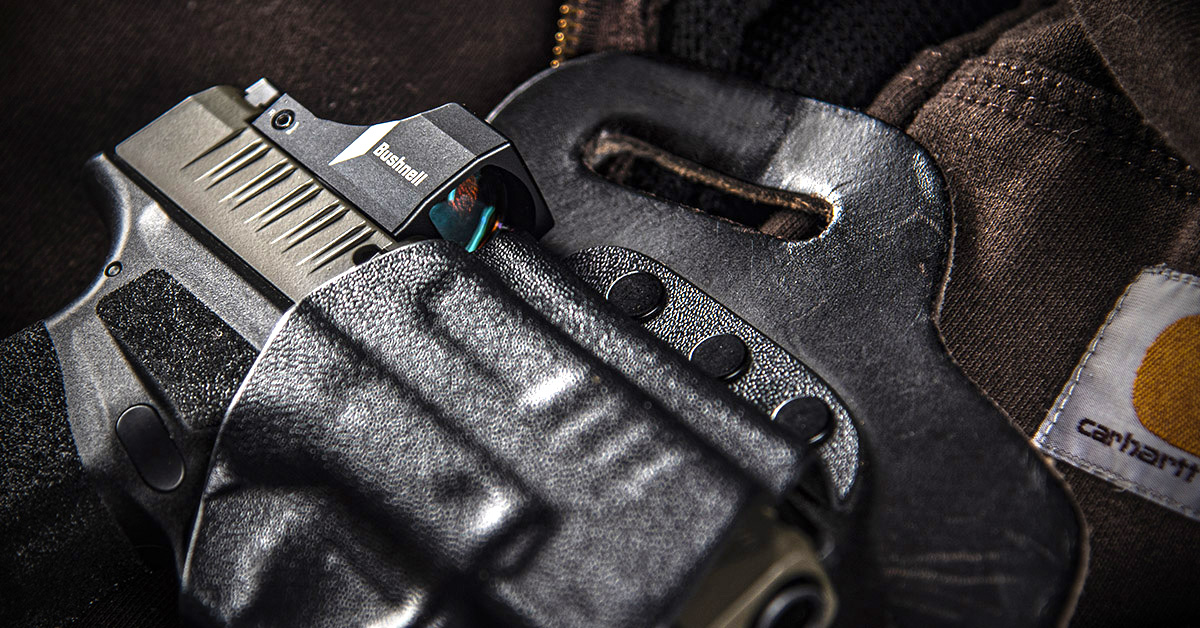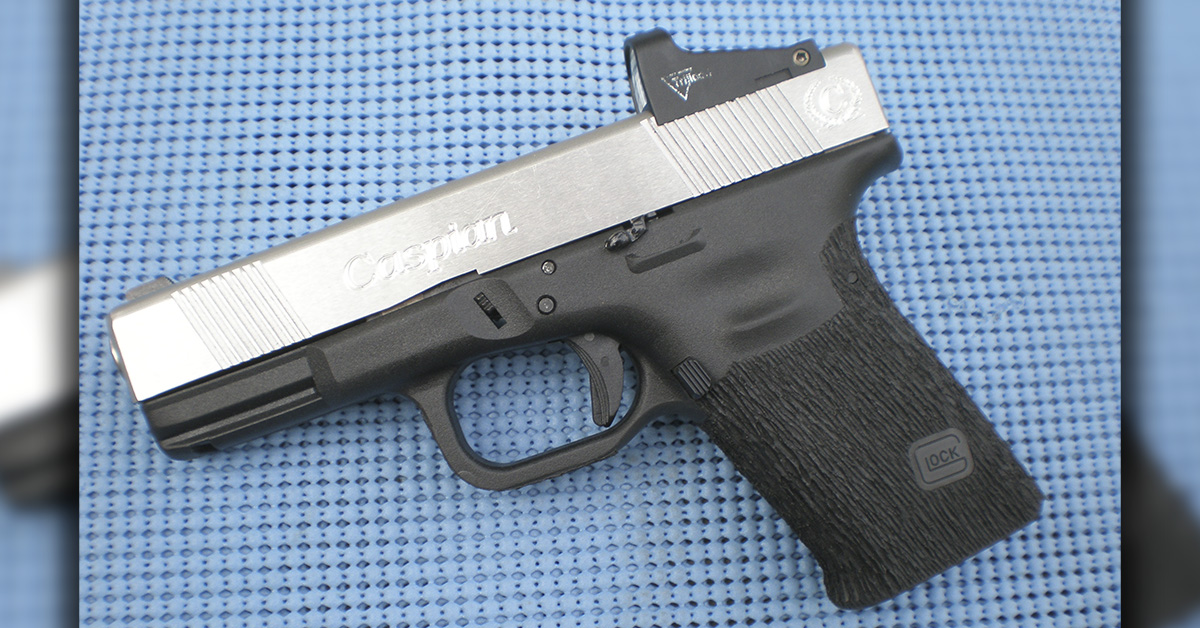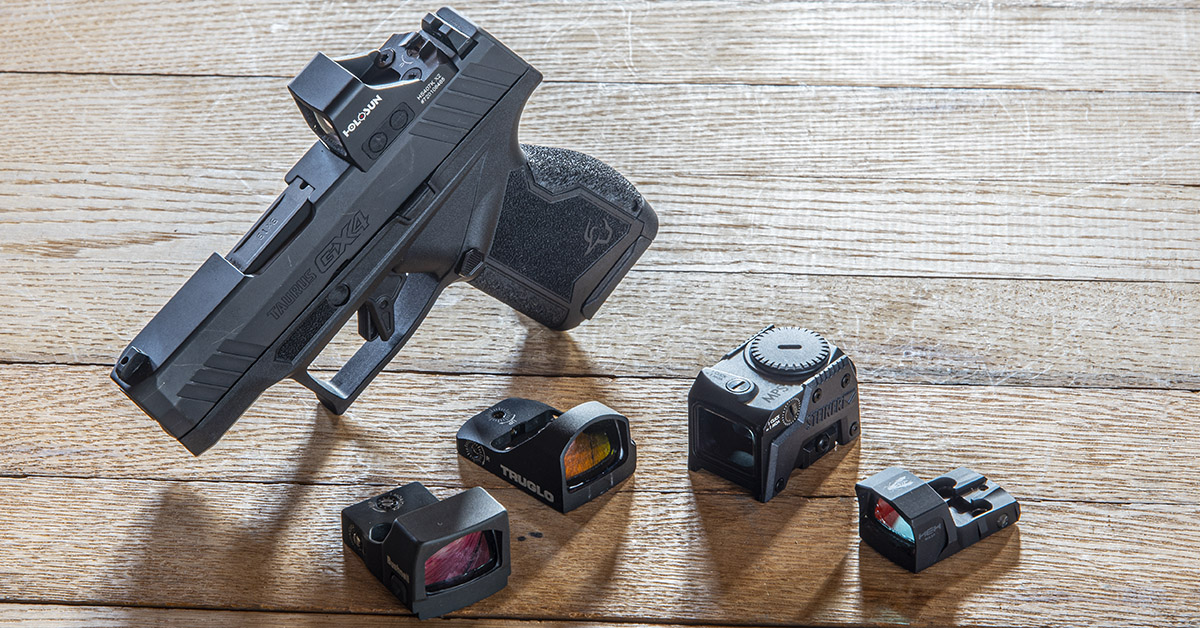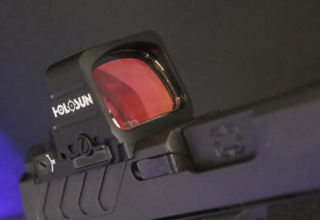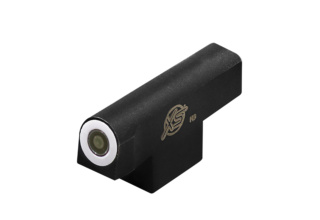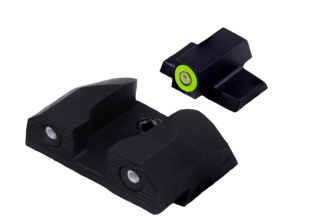Really…these things aren’t new.
by Erick Gelhaus
There is still a perception — a belief if you will — that battery-powered optical sights on pistols are something new. They are not. What is new are optical sights with most, if not all, of the needed reliability for a defensive firearm.
In many respects, I was late to the game when I put my first red dot sight on a pistol in 2010. I was still using the 1911 platform on duty as a deputy sheriff in northern California. While I had a few different off-duty guns, a Colt Commander was frequently in my holster back then.
Before I get too deep into this, a brief discussion of terminology is in order.
I know “red dot sight” is the common phrase for these. Unfortunately, that can also apply to the primary optical sights on carbines and shotguns and some back-up sights on larger caliber rifles. When the Los Angeles Police Department and Los Angeles Sheriff’s Department started looking at these, their review and testing program began using the phrase “pistol mounted optics.” I can’t argue with that. Both LAPD and LASD have longstanding ties to Gunsite Academy. In that same time frame, I had been tasked with developing Gunsite’s pistol-mounted optics program. Given all that, I am most comfortable using the phrase “pistol-mounted optics” and its acronym PMO.
That first optical sight, an Insights Miniature Red Dot Sight (MRDS), went onto a Combat Elite’s slide using a dovetail mount that I think came from Burris or Bushnell. Talk about offset and a bore line/sight line difference that made an M4 carbine happy!
How can I say I was late to the game? Well, one trainer — Kelly McCann — started doing that on his pistols years before.
Long before that, gals and guys I shot competition with had gone that route. And I shot those matches in the early and mid-nineties.
But wait! Even they did not start it.
Like many things related to shooting, it has been thought of and done decades ago.
While updating my material for the PMO instructor class I recently taught, I was given a photo of a “single-action Army” style revolver with a long, thin brass tube running down the top of the frame and barrel. Hmm, an optical sight in-use at least one century ago.
Early Battery-Powered Optics in Matches
In the early to mid-00s, the first noted effort at mounting a smaller optic on a pistol slide happened. A former Marine officer, Kelly McCann — who went by the nom de guerre of Jim Glover — had a dot sight fitted to his slide. This was because he wanted the same type of sight on his pistol that he had on his carbine.
Noted handgun trainer Dave Spaulding, of the former Handgun Combatives training company, was one of the early testers of this idea. Dave documented a fair amount of this in a 2020 article he wrote.
I wish I could recall those who influenced me to try my first dot in 2010, but I can’t. Regardless, I thought enough of the idea to find a gunsmith who would mill a slide for me. For several reasons, I was switching from a .45 ACP fed 1911a1 to a 9mm M&P with a thumb safety. I came across two companies: L&M Precision in Prescott Valley, AZ, and Atei. I went with L&M, who cut the slide for a first-generation RMR with a manual-adjust dot.
I knew other early adopters were about evenly split between L&M and Atei. A handful were trying various rear-sight dovetail mounting methods. One of the concerns at the time was there could be variations of thousands of an inch in the optic’s housing size — its footprint — from one to another. This led to slides being milled specifically for that individual optic. Not necessarily a bad idea if the optic remains functional.
But a problem was about to rear its ugly head. The Insights’ MRDS, Trijicon’s RMR, and others were designed for and built to sit on top of a rifle to serve as back-up sights. They were not designed to be bolted onto a reciprocating slide slamming back and forth as the pistol went through the cycle of functioning. Forty-caliber S$W pistols generated some significant “g” forces; 9mm and .45ACP pistols generated less. Still, they were not noticeably easier on the optics.
I made it nearly eight months with the original RMR on my M&P. Then, one day, I watched the dot track laterally from the center of the window to the left. I tried re-zeroing it and saw it repeat the process. Trijicon was great and they replaced it quickly. Unfortunately, that started several months of breaking, returning, and replacing RMRs. Trijicon was working on fixes and improvements as quickly as they could at the time.
After breaking double digits worth of RMRs, I walked away from them at the end of 2012. I did not, and would not, trust any of these red dots at that time.
By then, plenty of competition holsters would accept optics, and those open holsters had little difficulty accepting the frame mounts for those optics. For duty use, though, if you had a Safariland holster — specifically, the 6280s — you had to modify the holster to accept the optic. In my circles, that involved trauma shears and a Dremel tool.
Over the next few years, I watched the development of pistol optics from afar. The optics became more reliable. And more of them were released. That is continuing to happen.
Collectively, “we” went from one-off milling of slides to commercial solutions such as GLOCK’s MOS and Smith & Wesson’s CORE, along with all the follow-on versions. Over time, a few companies released aftermarket mounting systems combining slide work and plates. Two specific systems included Unity Tactical’s Atom Mount and Agency Arms AOS.
By 2018, the holster companies had realized that pistol-mounted optics were here to stay. By then, the market had already seen military-centric designs for pistols with optics. Law enforcement-specific holster designs — retention, mounting, color, et cetera — were also available at that point.
Finally, we saw trainers advertising and filling pistol-mounted optic classes.
Instead of a bunch of early adopters and experimenters, the community now had optics with improved reliability, holsters that supported pistol/optic combinations, and people who were teaching how to do this. That all came together right around 2018.
Stay tuned for Part 2 of our series, where we will discuss how to set up your optic-equipped pistol.
- Pistol Mounted Optics, Pt. 1 — How We Got Here - September 15, 2023

